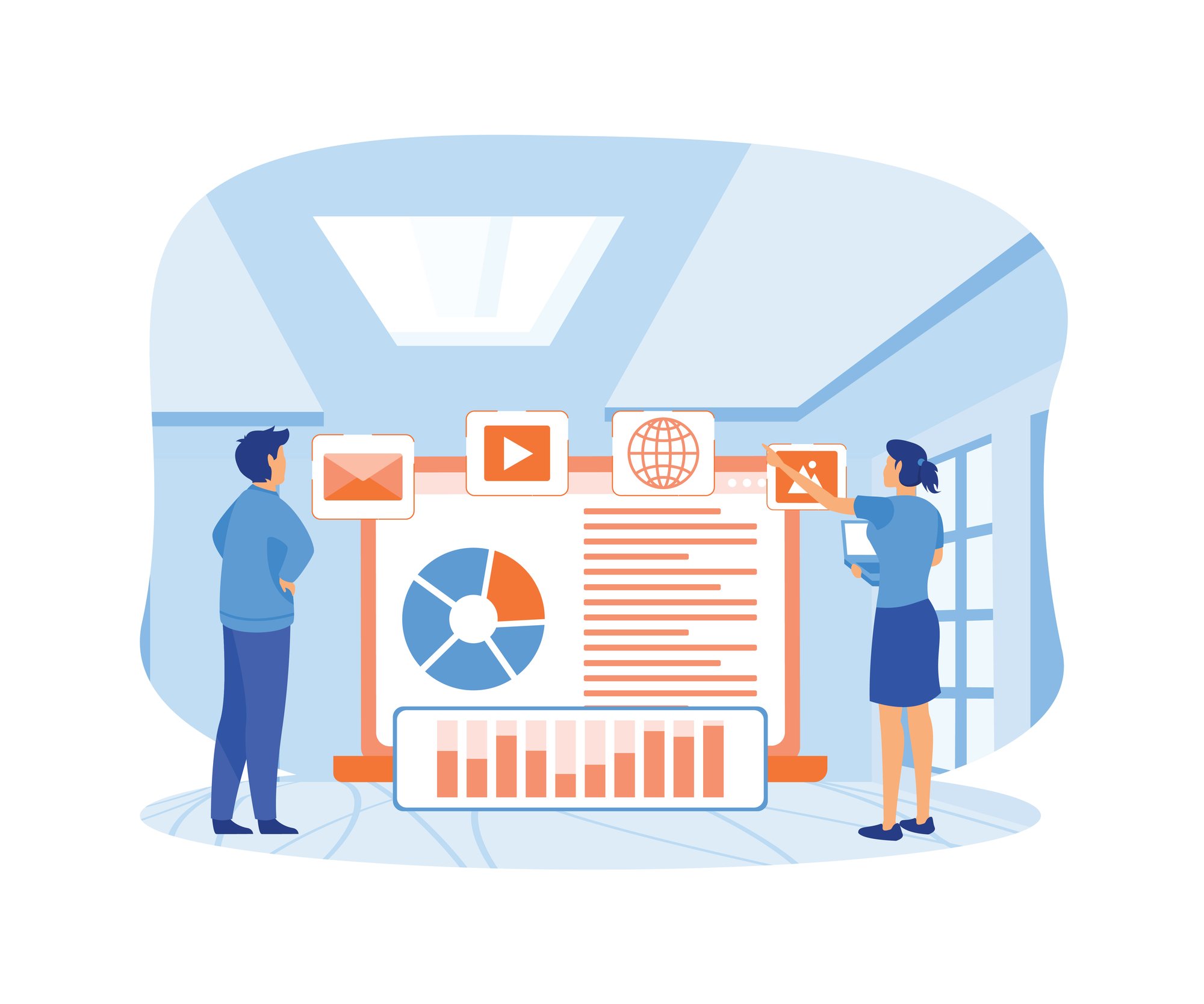
Master Email Automation Features with HubSpot & Marketo

Email marketing is a must-have tool for every marketer. It’s a no-brainer! It's a cost-efficient way to build brand loyalty, drive sales, and keep customers engaged. With email automation, you can efficiently deliver personalized content, target audiences effectively, and save on manual tasks and resources.
Email automation is the process of sending relevant information to subscribers via time or action-triggered emails. These automated emails are tailored to the individual user and can provide significant value to both the business and the recipient.
Marketo and HubSpot are two leading platforms in email automation. Both platforms provide robust automation features that can help businesses of all sizes improve their email marketing efforts. This post explores some of the basic email platform features offered by Marketo and HubSpot and how they can enhance your email marketing strategy. Keep reading to learn more!
What is Marketo and Using Marketo for Basic Automation
First, a brief Marketo overview. Marketo is a comprehensive marketing automation platform known for its robust features and flexibility. It's an excellent tool for businesses looking to improve their marketing efficiency and effectiveness, especially regarding email automation.
Critical features for basic marketing automation in Marketo include creating campaigns, using email templates, and setting up lead-nurturing workflows. These features allow you to design and execute sophisticated drip campaigns that drive engagement and conversions.
Creating a new campaign and setting up basic automation in Marketo is straightforward. Start by defining your campaign parameters, such as the target audience and the campaign goal, or try exploring the available Marketo automation examples. The best part is, you can customize your emails with Marketo's templates to fit your brand and message.
Marketo's lead nurturing workflows enable you to automate sending emails based on specific triggers and actions. This feature allows you to schedule emails based on particular triggers, like a user signing up for your newsletter or making a purchase.
You can use these Marketo features to implement basic automation in many ways. For example, you could set up a welcome email series for new subscribers, which introduces your brand and products to new audience members. You could also set up abandoned cart follow-ups, which send emails to users who have left items in their online shopping cart without completing a purchase. Additionally, you can use Marketo to send event reminders and confirmations, ensuring your audience stays informed and engaged with your events.
Marketo boasts a range of features that make it a powerful tool for email automation. Its user-friendly interface and flexible campaign creation tools make it an excellent choice for businesses looking to streamline their email marketing efforts and engage their audience more effectively.
Leveraging HubSpot's Automation Capabilities
HubSpot, another leader in the email automation field, offers a range of user-friendly tools to help automate your email marketing efforts effectively. Its features are intuitive, easy to use, and robust enough to handle complex email marketing strategies.
For a HubSpot overview of its essential features for basic automation, key elements include email sequences, workflows, and personalization options. Email sequences allow you to automate the process of sending a series of emails over some time while building workflows, which lets you automate more complex processes based on user behavior and other triggers. Meanwhile, customization options can make your messages more engaging and relevant to the recipient.
Setting up basic automation in HubSpot is straightforward. The platform makes designing automated emails a breeze while allowing you to specify the content and timing of each email. You can also add personalization tokens to your emails, pulling relevant data from each contact's profile to make your emails more personalized.
Building a workflow in HubSpot involves specifying the conditions that will trigger the workflow, such as a user signing up for your newsletter or downloading a resource from your website. You can then design the actions that will be taken once these conditions are met, including sending an email, updating a contact's profile, or assigning a task to your team.
You can use these HubSpot features to implement basic email automation in many ways. For instance, you can set up a drip campaign for lead nurturing, which sends informative emails to new leads over time. You can also automate sending event registration emails and follow-ups, ensuring attendees have all the necessary information. Moreover, you can set up re-engagement emails for inactive subscribers, which can help to rekindle their interest in your brand.
With HubSpot email automation tools, you can automate various tasks and streamline your email marketing processes. You can also see HubSpot automation examples, get tips and advice from experts in the HubSpot Community, and get more out of HubSpot. Regardless, with its user-friendly features and intuitive design, HubSpot is an excellent choice for businesses looking to improve their email marketing effectiveness and drive more revenue.
Best Practices for Successful Email Automation

You already know that email automation is a powerful tool, but it's crucial to follow best practices to maximize its benefits. These include segmenting your email list, A/B testing, monitoring performance, and ensuring compliance with email regulations.
- Segmenting Your Email List for Targeted Automation
Email list segmentation involves dividing your email list into smaller groups and categorizing them based on specific criteria, such as demographics, purchase history, or engagement levels. This lets you tailor your automated emails to match the needs and interests of each segment for a more personalized approach and effective communications. For instance, new subscribers could receive a welcome email series, while repeat customers might get exclusive offers or loyalty rewards. - A/B Testing Emails and Workflows
A/B testing involves sending two versions of an email to different subsets of your audience to identify which performs better. This is a crucial step when creating email sequences. You can test elements such as subject lines, call to action, or email design. Similarly, you can A/B test different workflows to see which automation sequence leads to higher engagement or conversion rates. The insights gained from A/B testing can help you optimize your email automation strategy over time. - Monitoring and Analyzing Automation Performance
Monitoring and analyzing your email automation strategy's performance is essential to understanding whether it is working. Key performance indicators (KPIs) include open, click-through, conversion, and unsubscribe rates. Through automation performance monitoring, you can identify what's working and where there may be room for improvement. - Ensuring Email Regulations Compliance
Lastly, ensuring that your email automation practices comply with relevant regulations is crucial. This includes the GDPR or General Data Protection Regulation in the EU, which mandates explicit consent for email marketing, and the CAN-SPAM Act in the US, which requires a visible and operable unsubscribe mechanism in every email. Non-compliance can result in hefty fines, so you must be familiar with these email regulations and incorporate them into your email marketing automation strategy.
Successful email automation requires careful planning, ongoing optimization, and a keen audience understanding. By following these best practices, you can leverage email automation to engage your audience effectively, improve email marketing efficiency, and gain a competitive advantage.
Unlock Email Automation Efficiency and Drive Results!
Automation saves time and can take your email marketing strategy to the next level. It is a crucial feature of any effective email platform that empowers marketers to reach their audiences more efficiently and engage them more effectively. Using the automation features provided by HubSpot and Marketo, you can streamline your email marketing processes and ensure that your messages are delivered at the right time to the right people.
Take your email marketing to the next level with Marketo and HubSpot! As experts in marketing automation for both platforms, SR Professional Marketing is here to help you implement basic automation using your email platform's features. Contact us today to maximize your email marketing potential!
